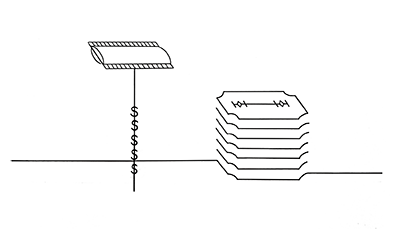Business Model Generation: Pricing model
Reversed Bait and Hook
Let an expensive product pave the way for cheap or free consumables

How: Entice initial product purchase and create a contrast to a razor and blade competitor by transferring the profit margin to the product instead of the consumable.
Why: Reduce barriers of entry to the market when consumables are perceived as being expensive.
The Reversed Bait and Hook business model, as its moniker implies, represents an inversion of the traditional Bait and Hook strategy. Like its predecessor, the model encompasses two distinct products:
- The consumable
- The dependent.
However, in this approach, the seller offers the dependent product at a premium price and the consumable at a lower, more accessible cost.
To illustrate, consider a company that sells razors at a high price point but offers blades at an affordable, budget-friendly cost. In this scenario, customers must invest a significant sum to access the razor, but are able to purchase the blades at a lower price. The producer’s focus is on selling a greater quantity of dependent items in order to achieve a higher profit margin.
To ensure that customers are dependent on their products, companies utilizing the Reversed Bait and Hook model make the blades or consumable items unique and incompatible with competitors’ devices. This feature guarantees that customers must purchase the proprietary device in order to enjoy the low-cost continuous/consumable products.
Where did the Reversed Bait and Hook business model pattern originate from?
The Bait and Hook model has been used in various industries for a long time, and the reverse approach is a newer variation of this model. It is used by many companies in different industries, such as technology and consumer goods.
Applying the Reversed Bait and Hook business model
The Reversed Bait and Hook Business Model operates on a similar principle as the traditional Bait and Hook model. Essentially, a company offers two products that are interdependent in nature; much like a razor that cannot function without its blades. However, the reverse approach is taken where the dependent item is offered at a premium price, while the consumable item is made available at a low or no cost.
In this model, customers are required to invest in the dependent item, which enables them to access superb features and services that would otherwise be unavailable. The dependent items are typically long-lasting and durable, allowing customers to enjoy the consumable services and products for an extended period.
The Reversed Bait and Hook Business Model operates on the simple sentiment of charging customers a premium price for the primary product, while offering add-ons free or at a reduced cost. This incentive is designed to entice customers to invest in the dependent item, ultimately enabling them to access additional features and services.
Real life Reversed Bait and Hook examples
Amazon Kindle
The Amazon Kindle device itself is rather expensive, but opens up a vast array of cheap book titles.
Apple iPhone
The device itself costs as much as a computer, and at the 2003 iTunes Store launch, an album download would cost $9.99 and a CD $18.
Trigger Questions
- What are the dependent and consumable products or services that we are offering?
- How will we market and position our dependent products or services to make them appealing to customers?
- How can you create an ecosystem so valuable that customers are willing to pay to get in?
Proven business models that have driven success for global leaders across industries. Rethink how your business can create, deliver, and capture value.
Get your deck!Related plays
- What Is the Razor and Blade Business Model? Apple's Reversed Razor and Blade Strategy by Gennaro Cuofano
- Kindle is a Reverse Razorblade by Goodreads
- Apple's Business Model Is Backwards by Mashable
- Reverse Razor And Blade Business Model by B Strategy Insights
